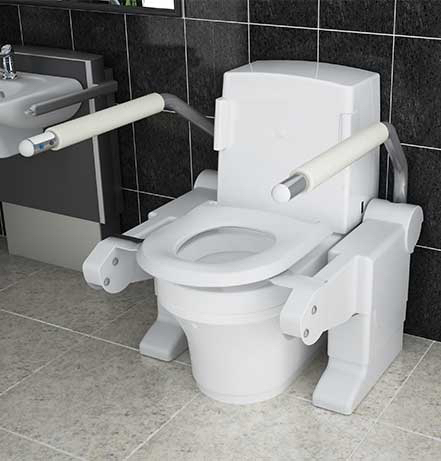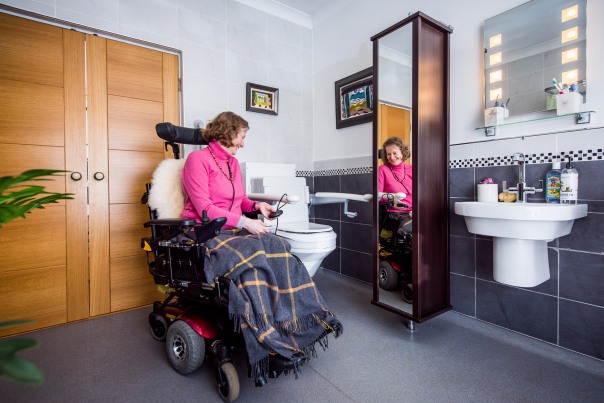Going to the toilet- it’s something most of us just take for granted at home. But imagine if you can’t just ‘go’, for whatever reason (you’ve had an accident, you’ve developed a health issue). Then what?
Chances are, you may have to wait weeks- or months- for alterations to your home, to install a WC at entry level, to adapt your bathroom so you can use it. Inbetween times, the extreme is that you could be faced with the indignity of having to use a commode, possibly even sat in your lounge.
It’s a situation that is likely to affect increasing numbers of us. Our population is ageing. We have a growing number of disabled people- currently almost 14m people, equivalent to 20% of the population.
Bear in mind, 80% of those registered disabled were not born with their disability, it happened- they developed an illness, had a life changing accident. It can happen to any of us. For those people who need their homes adapted, the bathroom is the room most frequently in need of adaptation, and the toilet the fixture therein that is most often changed in some way.
It sounds stark, but that’s the reality. It’s just one reason why it is so important we get behind the latest drive to make a realistic proportion of new build homes accessible and adaptable- in effect, what is already laid down in Building Regulations as the standard- Approved Document M 4(2).
It is an aim of Habinteg Housing Association, which has just published a report into the need for accessible homes. It is lobbying the Government to make accessible, adaptable housing to M4(2) a mandatory baseline in Local Plans.
Key elements of building accessible, adaptable homes are doorways wide enough to accommodate wheelchairs, level access, an entrance level WC, and a structure strong enough to bear the addition of aids such as grab rails, particularly when under load. To design a layout where the main bedroom is on the same floor- and ideally with doorways in line with- the bathroom (to facilitate subsequent addition of a ceiling track hoist).
It isn’t actually that hard to do. Nor is it expensive. But it will save the Government- and therefore us in taxes etc- vast sums of money in ensuring homes are fit for life, for purpose. Build accessible homes, and you reduce the need to retrospectively adapt them, with all its associated cost and disruption. You reduce the need to rehouse people into suitable homes. You reduce their need for care support. You reduce the need for NHS intervention.
We’ve managed to start addressing the need for affordable homes. Let’s commit to achieving the same with accessible homes, to build homes for life.

 So come on developers: lead the way whatever sector you operate in, just slightly adjust your designs and build processes, and enable millions of people to get on with living life.
So come on developers: lead the way whatever sector you operate in, just slightly adjust your designs and build processes, and enable millions of people to get on with living life.







